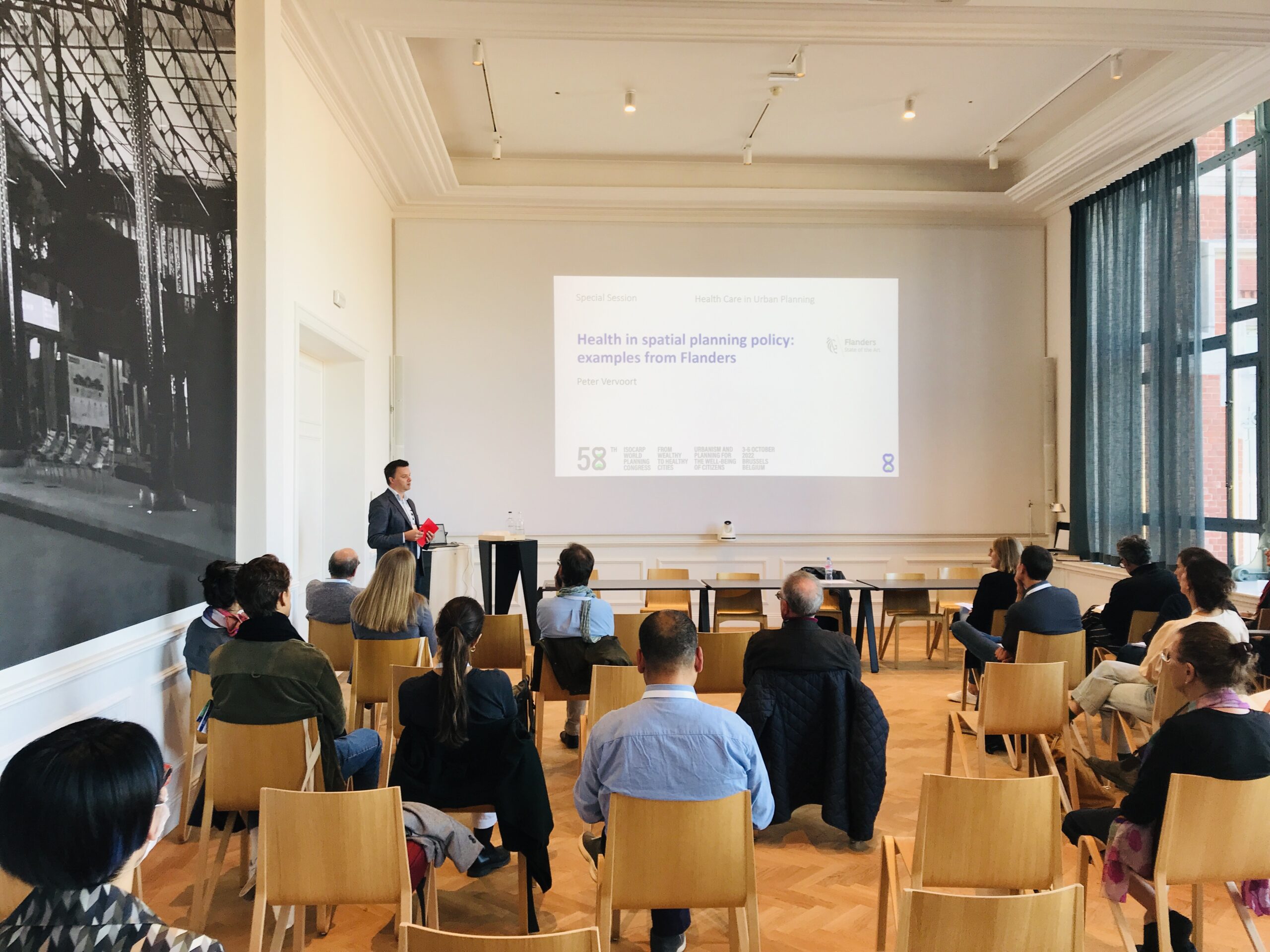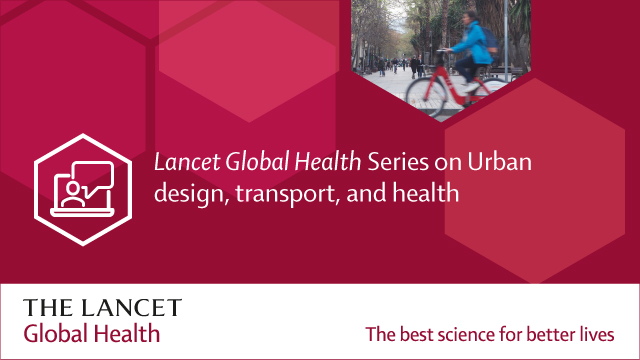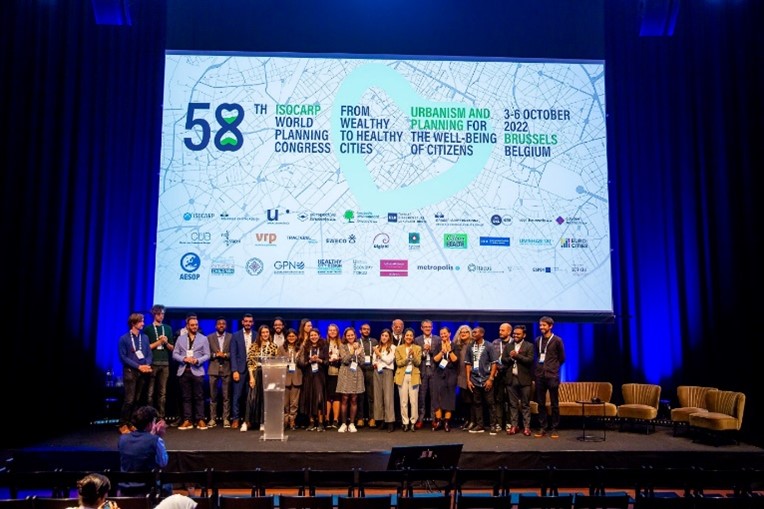Every year the largest global urban planners network gathers in a city to discuss current urban challenges. This year the Brussels Capital Region was a perfect host, and we were keen to support them in developing content for this occasion related to the congress theme ‘From Wealthy to Healthy Cities’. It was also an opportunity to distribute our 2021 Urban Insights report on health and well-being amongst all participants.
Monday and Tuesday recap
Plenary session
The event started with a plenary session at Maison de la Poste in the Gare Maritime, Tour & Taxis site. The speakers focused on the key role of urban planners to create a built environment that is healthy and influences our habits to be healthier.
The CEO of the Brussels planning agency perspective.brussels, Antoine de Borman, recalled the origin of urban planning as a solution to address pandemics, in the past as well as the present. Urban planning is not only a means to support health promotion, but it’s also used to drive equity in cities, focusing on investments that support the needed shift in cities that are good for everyone: more bikeways and road safety to increase comfort for children and families, clean air and more green spaces to reduce stress and improve mental health and social infrastructure.
Tour & Taxis ‘walkshop’
On Monday afternoon Sweco (BUUR | Boydens Part of Sweco) and perspective.brussels hosted a ‘walkshop’ around Tour and Taxis with great insights into the projects, presented by Veronica Pezzuti, Kurt Covers and Jens Aerts. The walk started at Gare Maritime, and we visited several projects including the L28 linear park and the recently inaugurated new bridge over the canal.



Special session “Healthcare in Spatial Planning”
Jens Aerts moderated a special session on “Healthcare in Spatial Planning” on Tuesday. It was an opportunity to present the first Health Impact Assessment for a district renewal program, conducted by the BUUR division on behalf of perspective.brussels. Project leader Séverine Hermand presented the results of this mission, together with general recommendations to mainstream this method in other city planning procedures. The importance of including the health dimension in the definition of urban projects was emphasized in discussions between congress participants and speakers.
According to the Health and Social Observatory of the Brussels Capital Region and several health professionals who were present in the panel discussion, the maps of low-income districts, poor access to green spaces, and air quality, and health issues overlap. The Brussels Environmental Agency acknowledged this. The special session also raised awareness about the importance of including the most vulnerable people in the project, such as children. The Bernard van Leer Foundation showcased its Urban95 program focusing on young children and organized a breathing exercise to emphasize the importance of clean air for children. This session provided an immersive experience into the topic of health in spatial planning and demonstrated the urgency of moving toward healthy city planning. It also demonstrated the complexities of the task and the need for a cross-disciplinary approach.
The Lancet Global Health Series on Urban Design, Transport and Health” special session
In 2016, the Lancet Series on urban design, transportation, and health emphasized the importance of integrated upstream city planning policies as a path to create healthy and sustainable cities and proposed a set of city planning indicators that could be used to benchmark and monitor progress. The Lancet Global Health Series on Urban Design, Transportation, and Health is a follow-up to The Lancet’s 2016 Series.
This special session presented the findings of a 3.5-year case study in 25 cities across 19 low-, middle-, and high-income countries, during which time they conducted policy analysis and assessed built environments and transportation features using geospatial indicators.
Ghent, Belgium, participated in this journey. Comparisons with the median values for all cities in this international study could help inform policy changes at the local level. The maps show the distribution of urban design and transportation features in Ghent, as well as areas that would benefit the most from interventions aimed at creating healthy and sustainable environments.
As a result, the Observatory’s scorecards and reports for the 25 cities in nineteen countries and six continents are just the start of a much larger global challenge. The vision of the Global Observatory of Healthy and Sustainable Cities is to include more city planning indicators and comparable data from over 1000 global cities.
This new series explores what’s needed to create healthy and sustainable cities, particularly in light of the COVID-19 pandemic and climate change: an inspiring study for Sweco to follow.
Young Planning Professional workshop
Chris Steenhuis and Ernesto Diez were selected as coordinators for the Young Planning Professionals Workshop that took place in the week leading to the congress. The workshop gathered 19 young professionals from different parts of the world (16 different countries!) to do research by design about how to (re)design a healthy environmental. The Port de Ninove in the canal zone was selected as case-study. During one week, participants developed their visions for the area together with stakeholders, coordinators and the governmental agencies as perspective.brussels, Urban Brussels and Brussels Environment.
On Tuesday, the team presented its visions visions during the ISOCARP congress. The YPP Workshop Exhibition with the different projects was installed at Gare Maritime during the week of the congress allowing further discussions and inputs from stakeholders. The exchange of information between professionals, with different backgrounds, about their projects, learnings and challenges is a fantastic way to find solutions for today’s and future challenges
Wednesday recap
La ‘15-minute city’
The ‘15-minute city’ is the subject of numerous research and modelling studies, opening the way to a vast field of knowledge and further study. This concept also opens several debates: “The 15-minute city – for whom?” or “How to go beyond the buzzword and move from the concept to a real lever for urban development?”.
Several feedbacks on participatory governance converge in the sense of an increased need for full participation of inhabitants and users in decision making. According to the WHO, a person’s health is based on three components: mental, physical and social health. Citizen participation appears to be the main asset of urban planning to improve social health, by responding to a need for recognition and the ability to act on one’s environment.
The question of quality of life in the city is also being tested by environmental upheavals. Several cutting-edge projects put forward integrated solutions to fight against heat island effects and atmospheric pollution.
Lastly, the topic of justice was introduced into the discussions. For example, Nature-based Solutions (NbS) are often a vector of “green gentrification” in the sense that they are generally implemented in environments that are already better off. This does not make them any less relevant, but it does raise the question of their attribution.
Geographer and keynote speaker Eric Swyngedauw reminded everyone of the systematic link between environmental and social crises through his shocking formula “My sustainability is someone else’s pollution”. Starting from the metabolic observation that a healthy urban environment implies socio-environmental disintegration (elsewhere), he invites planners to redouble their efforts to develop a “socially inclusive and ecologically sensitive urbanity”.
These observations are food for thought in Sweco’s approach to help create healthy environments.





